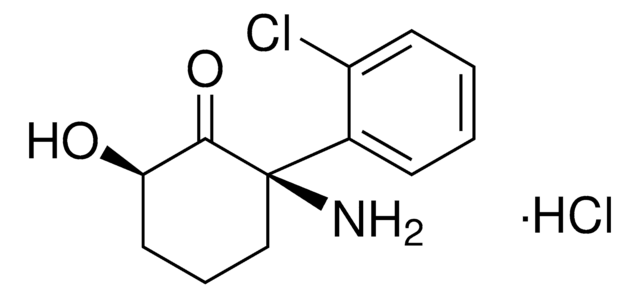E2634
Ergosta-5,7,9(11),22-tetraen-3β-ol
~96% (HPLC)
Sinónimos:
Dehydroergosterol
About This Item
Productos recomendados
Ensayo
~96% (HPLC)
Nivel de calidad
temp. de almacenamiento
−20°C
cadena SMILES
[H][C@@]1(CC[C@@]2([H])C3=CC=C4C[C@@H](O)CC[C@]4(C)C3=CC[C@]12C)[C@H](C)\C=C\[C@H](C)C(C)C
InChI
1S/C28H42O/c1-18(2)19(3)7-8-20(4)24-11-12-25-23-10-9-21-17-22(29)13-15-27(21,5)26(23)14-16-28(24,25)6/h7-10,14,18-20,22,24-25,29H,11-13,15-17H2,1-6H3/b8-7+/t19-,20+,22-,24+,25-,27-,28+/m0/s1
Clave InChI
QSVJYFLQYMVBDR-CMNOFMQQSA-N
Descripción general
Palabra de señalización
Warning
Frases de peligro
Consejos de prudencia
Clasificaciones de peligro
Carc. 2 - STOT RE 2
Código de clase de almacenamiento
11 - Combustible Solids
Clase de riesgo para el agua (WGK)
WGK 2
Punto de inflamabilidad (°F)
Not applicable
Punto de inflamabilidad (°C)
Not applicable
Listados normativos
Los listados normativos se proporcionan para los productos químicos principalmente. Para los productos no químicos sólo se puede proporcionar información limitada. Si no hay ninguna entrada, significa que ninguno de los componentes está en la lista. Es obligación del usuario garantizar el uso seguro y legal del producto.
Elija entre una de las versiones más recientes:
Certificados de análisis (COA)
¿No ve la versión correcta?
Si necesita una versión concreta, puede buscar un certificado específico por el número de lote.
¿Ya tiene este producto?
Encuentre la documentación para los productos que ha comprado recientemente en la Biblioteca de documentos.
Los clientes también vieron
Filtros activos
Nuestro equipo de científicos tiene experiencia en todas las áreas de investigación: Ciencias de la vida, Ciencia de los materiales, Síntesis química, Cromatografía, Analítica y muchas otras.
Póngase en contacto con el Servicio técnico








